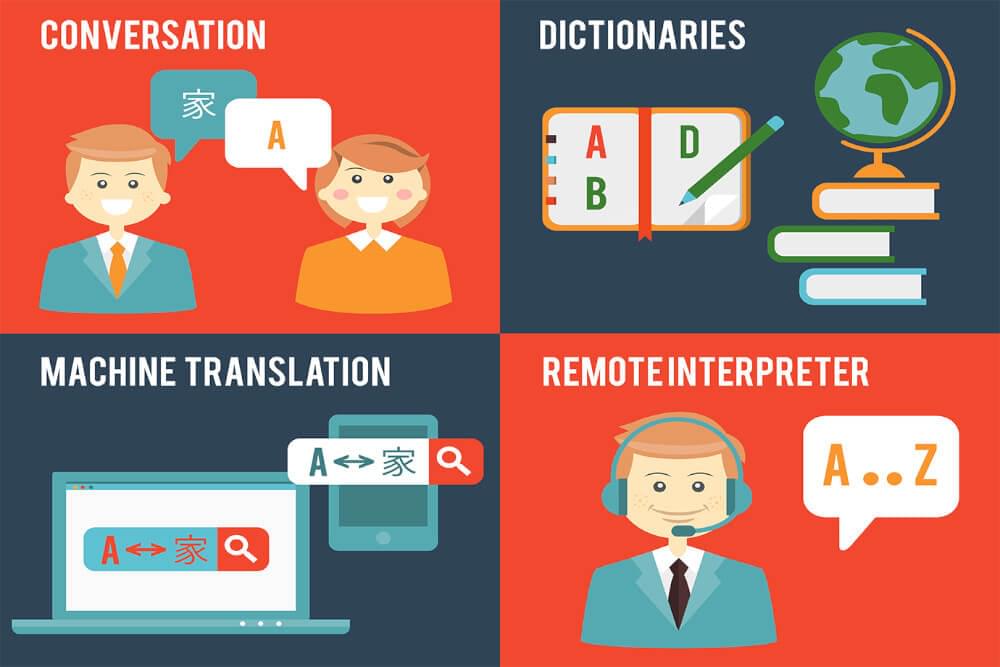
How to Translate Chinese Subtitles to English?
Mar 3, 202312 mins read
In today’s world, video content has become one of the most popular forms of media, with millions of people consuming videos daily. From entertainment to education, videos have the power to convey information and emotions in a way that is engaging and impactful. However, not everyone can access video content in the same way. For many individuals who are deaf or hard of hearing, have vision impairments, or speak different languages, videos can be inaccessible.
Language barriers can often pose a challenge to access video content, particularly when the video is not in the viewer’s native language. Translating the Chinese language into English can be challenging due to several barriers between the two languages. Chinese is a complex and nuanced language with unique grammar, syntax, and vocabulary. On the other hand, English is a Germanic language with a different structure and linguistic features. Chinese is a fascinating and complex language with rich history and cultural significance.
Here are some interesting facts about the Chinese language:
- Chinese is the most spoken language in the world, with over 1.3 billion speakers. It is also one of the six official languages of the United Nations.
- Chinese is a tonal language, meaning a word’s meaning can change depending on the tone used to pronounce it. There are four tones in Mandarin Chinese and up to nine in other dialects.
- The Chinese writing system is one of the world’s oldest and most complex writing systems. It uses characters that represent words or concepts rather than individual sounds, and over 50,000 Chinese characters exist.
- The Chinese language has a long history of more than 3,000 years. It has evolved over time, and many different Chinese dialects are spoken throughout China and other parts of the world.
- Learning Chinese can be challenging for English speakers, as the two languages are very different in terms of grammar, syntax, and vocabulary. However, learning Chinese can also be rewarding, as it can provide a deeper understanding of Chinese culture and history.
- Chinese language has contributed to many loanwords in English. Words such as “kung fu,” “dim sum,” “feng shui,” and “tai chi” have all entered the English language from Chinese.
- The Chinese language has significantly impacted the development of other East Asian languages, such as Japanese and Korean, which use Chinese characters in their writing systems.
- Chinese is a language that values politeness and respect. The language has many honorifics and formal expressions used to show respect and deference to others.
- Chinese language is an essential part of Chinese culture and plays a significant role in art, literature, and philosophy. Many of the world’s greatest works of literature and philosophy were written in Chinese.
Some of the barriers that can make translating the Chinese language into English:
- Linguistic Differences: The Chinese and English languages fundamentally differ in terms of syntax, grammar, and vocabulary. Chinese is a tonal language that relies heavily on context, while English is a non-tonal language that uses word order and syntax to convey meaning. This can make it difficult to convey Chinese text’s meaning in English accurately.
- Cultural Differences: Significant cultural differences between China and English-speaking countries can impact the interpretation of language. Chinese language and culture have a long history and unique traditions that can be difficult to understand and translate without cultural context.
- Idiomatic Expressions: Chinese language is rich in idiomatic expressions that can be difficult to translate into English without losing the intended meaning. These expressions often rely on cultural references and require a deep understanding of Chinese culture and language.
- Character Complexity: Chinese characters are complex and can have multiple meanings depending on the context in which they are used. This can make it easier to accurately translate Chinese text into English with a deeper understanding the context and the intended meaning.

Why Translate Chinese Subtitles to English?
Translating Chinese subtitles to English can be beneficial in many ways. Here are a few reasons why you should learn how to translate Chinese subtitles to English:
- Chinese media is gaining popularity worldwide, and subtitles can help you enjoy Chinese movies, TV shows, and other media.
- Learning how to translate Chinese subtitles to English can be an excellent way to improve your Chinese language skills.
- Translating Chinese subtitles can also be useful for research, such as analyzing Chinese news reports or academic content.
In such cases, the Chinese subtitle translator can make the content more accessible and enjoyable for a wider audience. Subtitles can also be a helpful tool for language learners. By providing subtitles in English, viewers can read and listen to the content simultaneously, enhancing their comprehension and vocabulary. This can be particularly helpful for individuals learning a new language and wanting to improve their listening and speaking skills.
When translating Chinese subtitles to English, there are several factors to consider, ensuring accuracy and effectiveness:
- Translation Quality: It’s essential to ensure that the subtitles are translated accurately and convey the intended meaning. Professional translation services or working with experienced translators can ensure quality and accuracy.
- Cultural Context: When translating subtitles in English, it’s essential to consider cultural differences that may impact the meaning of the content. Translators should be familiar with the cultural context of both the source and the target languages to ensure accuracy.
- Timing and Length: Subtitles should be timed to match the spoken words in the video and be long enough to convey the whole meaning but short enough to be read easily.
- Font and Formatting: The font and formatting of the subtitles should be clear and easy to read, with the appropriate size and color contrast.
Basic Steps to Translate Chinese Subtitles to English
Translating Chinese subtitles to English can be a daunting task, but there are several ways to give subtitles to Chinese videos. Here are two of the most common methods:
- Manually creating subtitles: One of the most straightforward ways to add subtitles to a Chinese video is to create them manually. This involves transcribing the audio and translating it into English or another language. This method can be time-consuming but allows full control over the subtitle content.
- Using automatic transcription and translation software: Another option is to use automatic transcription and translation software. These programs use speech recognition technology to transcribe the audio and then automatically translate it into the desired language. While this method can be faster than manual creation, the accuracy of the subtitles may sometimes be a challenge.
SubtitleBee is one of the famous choice of content creators and digital marketers—as this software excels in automating the subtitle tasks in a most intelligent way that the quality of subtitles remain no matter what the language is.
It beautifully captures the syntax of 120+ languages that you see no error in delivering the accuracy of each word and sentence.
You can freely translate Chinese subtitles to English with the help of SubtitleBee
Steps to Translate Chinese Subtitles to English with SubtitleBee
- Upload the video on that you need to translate.
- Select the language to Chinese
- Hit the command button, and let it do the magic in minutes
- Proofread and edit the translated subtitles to ensure accuracy.
- Download and save the translated subtitle file with an appropriate name.
Benefits of SubtitleBee to translate Chinese videos into English
SubtitleBee is the enterprises’ choice when it comes to having quality-oriented subtitles in 120+ different languages. SubtitleBee is not just the translator; it picks the real sense of the sentence and translates it by keeping the actual meaning of the sentence.
Here are some of the benefits of using SubtitleBee:
- Time-saving: One of the most significant benefits of using a SubtitleBee is that it saves time. Instead of manually typing out every word of the subtitle, you can use SubtitleBee to automate the process. This means you can generate subtitles for a video in just a few minutes rather than spending hours doing it manually.
- Accuracy: Another benefit of using SubtitleBee is that it improves the accuracy of your subtitles. SubtitleBee uses advanced algorithms to transcribe and time the subtitles, which can lead to a more precise and error-free result.
- Cost-effective: Using SubtitleBee is a completely price-friendly package. Instead of hiring a professional subtitle translator or transcriber, you can use SubtitleBee to do your work. It can save you significant money, especially if you need to generate subtitles for multiple videos.
- Accessibility: SubtitleBee can also help to make your content more accessible. By adding subtitles to your videos, you can make them accessible to people who are deaf or hard of hearing. Subtitles can also help people who speak different languages understand your videos’ content.
- Improved SEO: Using SubtitleBee improves your video’s SEO. Search engines like Google can’t “watch” your video, so they rely on other factors, such as subtitles and captions, to understand what your video is about. Adding accurate and descriptive subtitles to your videos can help improve your video’s search engine rankings.
Wrapping-up
Translating Chinese subtitles to English can be challenging, but with the right tools and techniques, it can be a rewarding experience. By following the basic steps, using helpful tips, and utilizing the best tools available, you can easily translate Chinese subtitles to English. Remember to take the time to proofread and edit the translated subtitles to ensure accuracy. If you encounter any challenges, don’t hesitate to seek help from someone proficient in both Chinese and English.
Common FAQs about Translating Chinese Subtitles to English
Q: Do I need to know Chinese to translate Chinese subtitles to English?
A: Yes, you need to have a basic understanding of the Chinese language to translate subtitles accurately.
Q: How can I ensure the translated subtitles are accurate?
A: Proofreading and editing the translated subtitles is essential to ensure accuracy. It’s also a good idea to have someone who is proficient in both Chinese and English review the subtitles to ensure they are accurate and appropriate.
Q: How long does it take to translate Chinese subtitles to English?
A: The time it takes to translate Chinese subtitles to English varies depending on the video’s length and the subtitles’ complexity. It can take a few hours to complete the translation.
Q: Is translating Chinese subtitles to English for personal use legal?
A: Translating Chinese subtitles to English for personal use is generally legal. However, distributing the translated subtitles without permission from the copyright holder may be illegal.
Add and translate your subtitles to more than 100 languages with high accuracy












